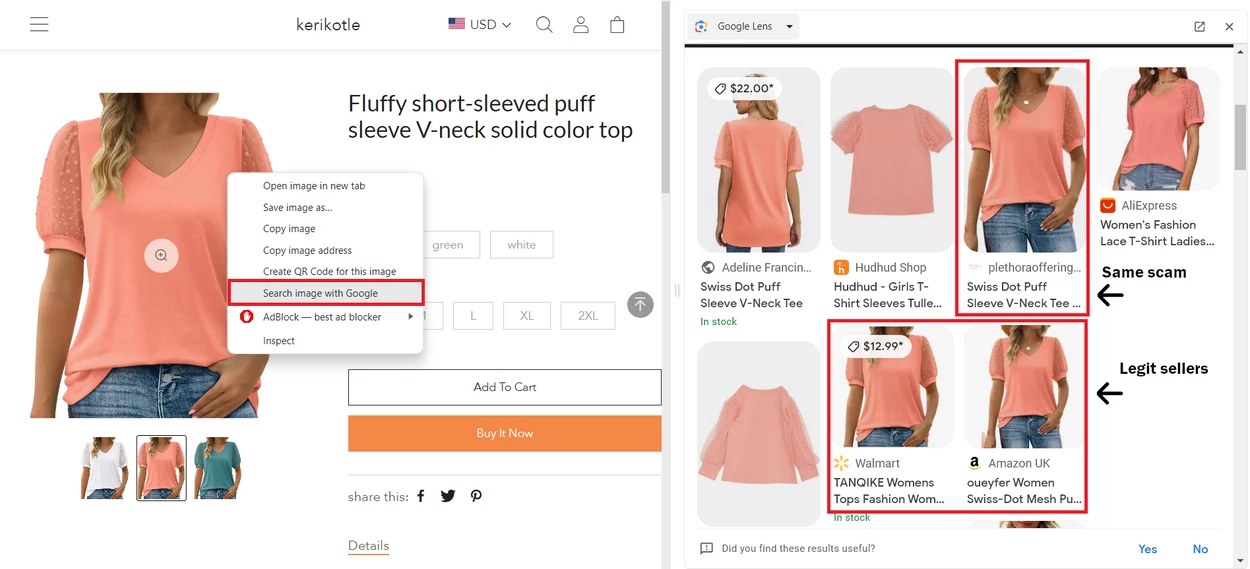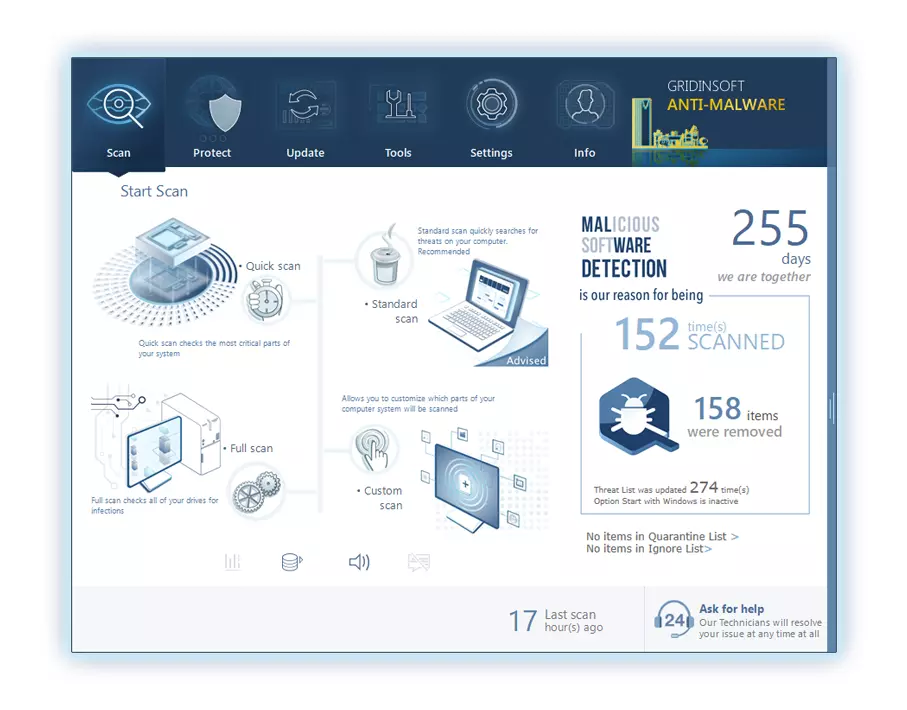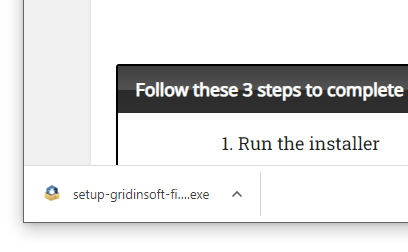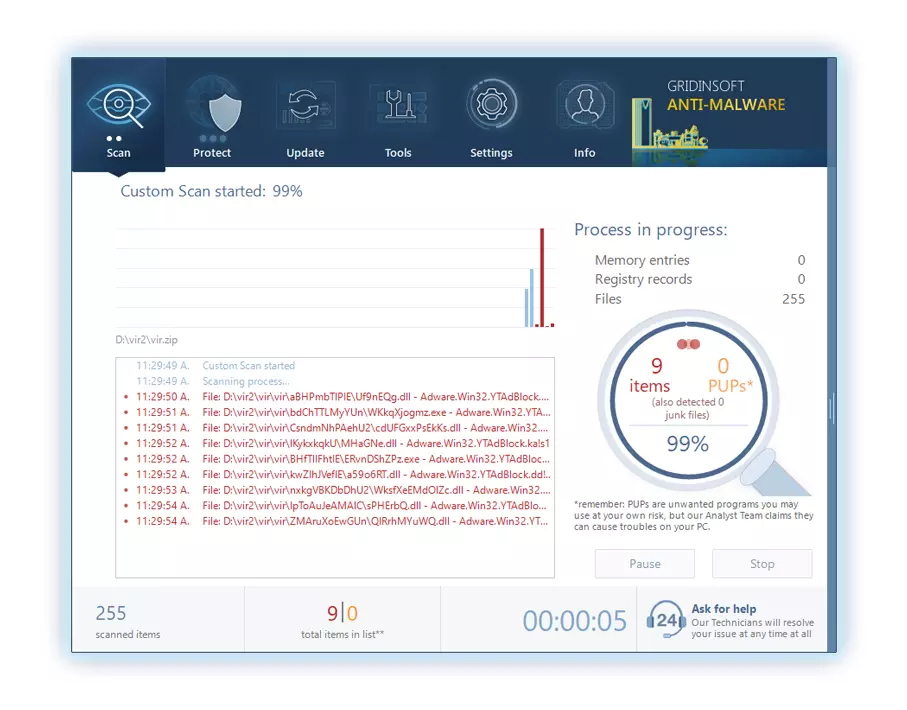Taylorclassic.com is a scam website that offers to purchase various clothing at extremely low prices. It may appear as a discounter, or as a marketplace for warehouse liquidation items, but it is in fact just a story to make you think about this site as a legitimate one. After placing an order on this site, you will likely get nothing at all, or, at best, inferior or counterfeit items.
In this article, I will demonstrate the warning signs regarding the Taylorclassic.com store, the way this deception operates, and explain how to detect similar frauds. This will help you to avoid similar shopping scams in future.
Taylorclassic.com Site – Scam Overview
As I said, Taylorclassic.com may initially seem like a genuine discounter or the seller of stock liquidation items. But a swift analysis shows a troubling amount of red flags that say clearly about this site’s deception. Questionable advertising methods, excessively low prices, absence of user support and user reviews – this site fulfills the scam bingo right away.
| Website | Taylorclassic.com |
| Hosting | AS13335 Cloudflare, Inc. Canada, Ottawa |
| IP Address | 23.227.38.32 |
| Threat Type | Scam/Fraud |
| Scam Type | Fraudulent/Scam online shop |
By shopping on pages like Taylorclassic.com, it is uncertain that you will obtain the goods you’ve ordered. More commonly, it results in one of 3 instances common for scam sites.
Counterfeit goods. Not the worst option, as you get at least something. But as it usually happens to counterfeit items of popular brands, the characteristic will be inferior, to say the least. Eventually, the site may indicate about that somewhere deep in the item description or “about us” page, but users rarely check them thoroughly. This is a notably frequent case when ordering from sites that offer baubles, small electronics and stuff the like.
Wrong item. To make the purchase look real, but spend even less money on the delivered item, scammers may send a random item they have instead of your order. A worn t-shirt instead of a branded one, a dirty aluminum dish instead of a set of dishes – frauds may turn rather inventive in that case.
Absolutely nothing. This is the most common situation when ordering from pages like Taylorclassic.com. Scams take your money, promise the delivery, and then simply disappear. As scam websites do not aim to exist for a long time, fraudsters do not bother themselves with creating even a vague visibility of legitimacy.
Taylorclassic.com scam – How does it work?
As any fraud, Taylorclassic.com follows a simple and well-proven scheme of operations. It commonly consists of 3 stages, with certain deviations from time to time.
Step 1 – Attract the Masses. Scammers post abundant amounts of promotions on online platforms, particularly preferring Facebook, YouTube, Instagram and TikTok. Paid ads say exactly the same things as their sites do: 90% discounts, free delivery around the world, hurry up to get the deal.
As users regard ads on the mentioned platforms legitimate, they do not doubt anything at this point. Ads become particularly compelling during major events that boost people’s interest in shopping, like Halloween, Black Friday, Christmas, etc. Sometimes, they disguise themselves as resellers of the liquidated stock of bankrupt retail companies.
Step 2 – Take the Money. Once users are on the site, fraudsters do their best to make the users buy something. Mind-boggling deals, additional discount promo codes, free shipping, bright and blinking “Order Now” buttons that are just everywhere – they use every single method possible. And this works out – uninformed consumers stick to the offers and proceed to paying for the order.
Payments are done in a quirky manner. Instead of more classic options for online shopping, like Visa/MasterCard payments or PayPal, fraudsters offer using direct bank transfers, Venmo or CashApp. Thing is, the latter do not provide any refunds, regardless of the circumstances. Even when you can prove that the transaction went to swindlers, “no refunds” is a part of their policy which you agree on upon registration.
Step 3 – Vanish. Once tricksters get enough money, or – what is more likely – there are enough complaints and user feedback regarding the site being a scam, they just disappear. Usually, this happens at around the 2nd or 3rd week of the site activity. Once enough people are aware about the dishonest activity, the profits will dry up, leaving crooks with no motivation to move on. Reporting the scam to the hosting helps take the domain down pretty quickly.
Why is Taylorclassic.com a Scam?
Well, we just talked about the way the scam site operates. Now, let’s see how to understand whether the site is untrustworthy without risking your money. Fortunately, frauds do not bother themselves with creating well-rounded disguises, so the same red flags repeat from one site to another.
1. Fake or absent reviews
Hoax websites aim to exist for 1-2 weeks, so there’s no reason (and way) to make any online reputation with user reviews. Obviously, even benign online shopping sites will lack buyer opinions when they have just started, as there were just a few consumers yet. For that reason, this sign is not stand-alone and requires confirmation by other signs or indicators.
However, when you face phishy-looking reviews that have nothing to do with what the site sells, that’s definitely not a good sign. Any blurred or gibberish reviews that may describe any item sold on the website should be taken with a grain of salt. And well, on scam websites you will get an entire saltcellar. Always search for reviews on Google – this may save your money.
2. Unbelievably high discounts/low prices
No merchants will sell goods at loss for themselves. 70%, 80%, 90% reductions are not viable even during sales events such as the aforementioned Thanksgiving day. In some cases, fraudulent websites set the prices low without saying anything about discounts, but they will most likely be preposterous, like $30 for a bed or $10 for a branded leather bag. Goods may be sold at a low price, but every discount has its logical limits.
3. No customer support.
That factor distinguishes scam sites from the legit ones, even newly established. When a site is about to defraud the clients, there’s no need to bother about answering their questions. Check out the “About us” or “Info” page – the page will have no support contacts whatsoever.
When they offer an email, or even a phone number to reach them out, there is a huge chance that these emails and numbers will be unresponsive to your request. This, or they will answer you with generic text regardless of your inquiry.
As frauds tend to reuse phone numbers and email addresses as “support” contacts, you can search them on Google. When they appear on a different site, be sure that this is a blatant scam.
4. Payments via payment systems that does not support refunds
This scam indicator is complementary, as there are a whole lot of benign shops and services using direct bank transfers, CashApp, Venmo or payment systems like them. Each of the latter has the same feature I’ve already mentioned above: these methods do not suppose any refund options. And this is what makes it so attractive to scammers – once you’ve sent the money, nothing will help you to get the money back.
Some websites may also ask for payments in crypto, which is even less controllable than aforementioned payment methods. While crypto payments expand their presence slowly, they still remain a beloved bay for different fraudsters.
5. Items’ images are sourced from another page
As scammers most likely don’t have any real items on hand, they are not able to create unique pictures. Thus their option is to steal these images elsewhere. When scammers sell identical items on different sites, you can find such images on similarly-looking fraudulent sites. By reverse image searching on Google, you can prove the uniqueness of an image.

Image duplicates on another scam site, as well as on Amazon and Walmart sites
6. Design repeats the one of a different page
This is the continuation of the stolen images I’ve just described. As frauds may scam people on the same topic again and again, they use the same web design under the new web-address, and voila – a new scam is ready to rock-n-roll! In some cases, reverse image search on Google advice from the previous paragraph may lead you to the identical copy of the page you’ve started on. It makes uncovering such frauds pretty easy, but scammers who run them never aim at cautious users.

Example of scam sites that duplicate each others’ design
Is your PC infected?
There are cases when Taylorclassic.com site, along with similar scam pages, are promoted by malware. Adware and browser hijackers are malware types known for such behavior. If you notice excessive amounts of ads in your browser, have your search inquiries going into an unusual search engine and some random pages open time to time, scan your PC with GridinSoft Anti-Malware. This will help you to get rid of annoying promotions and scam sites.
Remove malware with Gridinsoft Anti-Malware
We have also been using this software on our systems ever since, and it has always been successful in detecting viruses. It has blocked the most common adware as shown from our tests with the software, and we assure you that it can remove malware as well as other malware hiding on your computer.

To use Gridinsoft for remove malicious threats, follow the steps below:
1. Begin by downloading Gridinsoft Anti-Malware, accessible via the blue button below or directly from the official website gridinsoft.com.
2.Once the Gridinsoft setup file (setup-gridinsoft-fix.exe) is downloaded, execute it by clicking on the file.

3.Follow the installation setup wizard's instructions diligently.

4. Access the "Scan Tab" on the application's start screen and launch a comprehensive "Full Scan" to examine your entire computer. This inclusive scan encompasses the memory, startup items, the registry, services, drivers, and all files, ensuring that it detects malware hidden in all possible locations.

Be patient, as the scan duration depends on the number of files and your computer's hardware capabilities. Use this time to relax or attend to other tasks.
5. Upon completion, Anti-Malware will present a detailed report containing all the detected malicious items and threats on your PC.

6. Select all the identified items from the report and confidently click the "Clean Now" button. This action will safely remove the malicious files from your computer, transferring them to the secure quarantine zone of the anti-malware program to prevent any further harmful actions.

8. If prompted, restart your computer to finalize the full system scan procedure. This step is crucial to ensure thorough removal of any remaining threats. After the restart, Gridinsoft Anti-Malware will open and display a message confirming the completion of the scan.
Remember Gridinsoft offers a 6-day free trial. This means you can take advantage of the trial period at no cost to experience the full benefits of the software and prevent any future malware infections on your system. Embrace this opportunity to fortify your computer's security without any financial commitment.
Frequently Asked Questions about the Taylorclassic.com Scam
Taylorclassic.com operates as a scam website that pretends to be an online store selling various items at low prices. However, it is involved in fraudulent activities and aims to deceive customers by sending counterfeit or inferior products or not delivering anything at all.
There are a couple of signs that point at fraudulent nature of Taylorclassic.com shop. First and foremost, Taylorclassic.com shop recently established its online platform, which is a typical characteristic of brief deceptive online platforms that quickly disappear. Second, the site lacks contact details such as a phone number, physical address, or real-time chat option, making it hard to tackle issues or queries. Third, it provides bogus business information, offering no real information about the company behind the webpage. Moreover, this fraudulent scheme entices buyers with impractical discounts and promotions, slashing prices by over 70% or even 90%. Additionally, Taylorclassic.com copies content and product images from authentic online stores like Alibaba, Amazon, and Aliexpress, showing a lack of unique ideas and reliability. Furthermore, despite claiming to provide trendy and fashionable products, the platform lacks any social media presence or links to social media platforms. Lastly, authentic client testimonials is completely absent, with reports of delayed or missing deliveries, substandard client assistance, flawed or wrong products, repayment difficulties, and unauthorized charges on credit cards.
No, it is not a legitimate or reliable website. The aforementioned red flags indicate that it lacks credibility and has been reported as a scam site. Customers have experienced receiving counterfeit products or facing difficulties in obtaining refunds or contacting the company.
Take the following steps if you have made a purchase on Taylorclassic.com:
- Firstly, immediately contact your bank or financial institution if you paid with a credit card or debit card. Request them to cancel the transaction and initiate a refund. Additionally, report Taylorclassic.com as a fraudulent site and urge them to block future charges from it.
- Promptly change your passwords if you have a Taylorclassic.com account or use the same password for other online accounts. Consider enabling two-factor authentication to enhance security against hackers attempting to access your accounts and steal personal information.
- Beware of phishing emails related to your Taylorclassic.com order. Treat any emails offering discounts or refunds as phishing attempts. Avoid clicking on suspicious links or downloading attachments that may contain malware. Delete such emails immediately.
- To prevent malicious ads, Trojans, phishing attempts, and other undesirable content, use a browser-based content blocker like AdGuard. This will complement your antivirus software and provide enhanced protection.
- If you suspect your device is infected with malware, scan it using Gridinsoft Anti-Malware to ensure your security.
No, Taylorclassic.com does not have genuine customer feedback or testimonials. The absence of legitimate customer reviews further indicates its untrustworthiness and potentially fraudulent nature.








